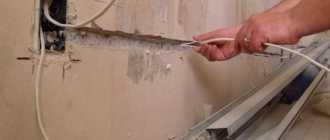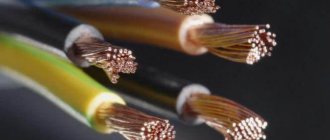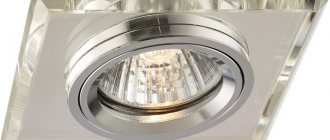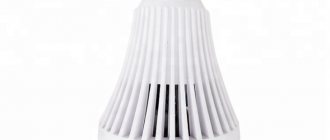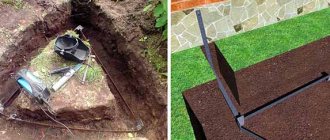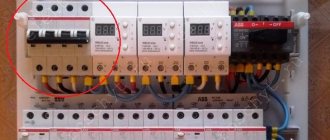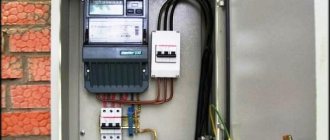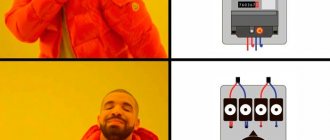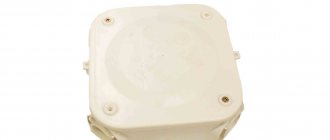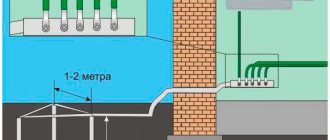What to look for when choosing?
Once a person has firmly decided to buy a automatic machine, it is important to pay special attention to the selection process.
This way the user will protect himself from possible counterfeits and acquire reliable and durable equipment. First, it is important to look at the technical characteristics of each product, only then choose from those that are more suitable for a particular home. First, it is important to look at the technical characteristics of each product, only then choose from those that are more suitable for a particular home.
Rated voltage and number of phases
Selecting a product based on this criterion is easy. Here it is enough to remember one nuance: devices that operate in a single-phase network have 3 terminals for connection, in contrast to three-phase ones, where there are four of these poles.
The operating voltage is indicated on the label, in the technical data sheet, and is also marked on the unit itself so that people do not forget about it.
Current rating
In order for a differential machine to guarantee trouble-free operation, it is important to look at a parameter such as the current rating. Knowing this criterion will help you choose a better option.
Information about this value is located on the label and in the accompanying documentation, indicated by a letter and a number, where the letter symbol indicates the characteristics of the product, and the number indicates the nominal value. For example, C30 indicates to the user that the device rating is C, while its rated voltage is 30 Amps. A suitable option for cottages and multi-room apartments are devices with characteristics C; they have good reliability indicators and are in wide demand among buyers. When choosing this device, it is best to look at a special table that is located on the Internet.
Maximum leakage current value
Most products are produced with a value of up to 30 mA; such information is placed on the case with the Greek symbol “delta”; there is also a number that corresponds to the current value.
To choose the right product for this parameter, you should consult with a specialist and tell him about all the electrical networks and connections.
If you are using a group line that is planned to be divided, then it is enough to buy a product whose characteristic will be 30 mA. This is the optimal value that is suitable for most tasks. However, for input into a country house, it is recommended to install 300 mA models, as they guarantee reliability and safety. In apartments this value is less and is 100 mA.
The best foreign manufacturers
The rating of foreign manufacturers of circuit breakers and RCD devices will help you choose quality products for your home electrical network. Users identified the Top 4 brands.
1st place – ABB
The company was included in the rating of manufacturers of automatic devices for electrical wiring in apartments based on the safety and reliability of the products. Expensive devices do not burn out under conditions of constant power surges.
Pros:
- compactness;
- easy to assemble into a shield;
- safety;
- the presence of switches with 4 poles;
- smooth edges.
Minuses:
- grooves for the rail are disposable;
- small selection of D-class models.
2nd place – Siemens
From the assortment it is easy to choose a reliable switch for domestic and industrial purposes. The manufacturer sets the cost of devices 3 times cheaper than ABB, so they are worth taking for installation in rooms with an average network load. Shutdown occurs when the voltage increases to 6 kA.
Pros:
- screws with slotted heads for strong fixation;
- ease of restoration of the circuit when the switch is tripped;
- ease of access to the distribution box shifted downwards.
Minuses:
- Russians mainly have access to products with currents up to 63 A;
- products exclusively for C-class operation;
- The screws are tightened with a special screwdriver.
3rd place – General Electric
The brand was included in the rating of manufacturers of RCDs and automatic machines for reasons of wear resistance, service life, and inexpensive cost of products. The rating of the switches is from 0.5 to 63 A. They are suitable for networks of 230-400 V.
Pros:
- 30 types of goods for three- and single-phase networks;
- the household series is designed for 10 thousand operations and 20 thousand mechanical breaks;
- embossed toggle switch;
- compactness.
Minuses:
- nominal limit - 63 A;
- Suitable only for C-class shutdowns.
4th place – Schneider Electric
The household line of this brand of foreign EASY 9 machines is characterized by quality workmanship and affordable cost. Installation is carried out on a DIN rail, and the response during voltage surges is almost instantaneous. The operating rating is 0.5-63 A.
Pros:
- automatic machines for 1-4 poles;
- high-quality terminal holes;
- large selection of modular devices;
- several single-phase devices in one housing;
- comfortable toggle handle;
- durability and reliability.
Cons: curve - only for devices of class B and C; high price.
Basic parameters taken into account when choosing
The main parameters taken into account when choosing an input device include:
- Rated current and power.
- Method of fastening within the cabinet.
- The number of poles available for this VA model.
As additional characteristics that help to select the desired type of machine, its time-current indicators are considered.
Rated current and power
Selecting a machine by power
The rated current of any machine is indicated in the markings on its body (C40, for example). The digital indicator means the value of the current component at which this device is able to operate without shutting down for a long time.
The nominal value is set at an ambient temperature of 30 degrees.
If it decreases, this indicator increases, and if it increases, it decreases.
VA power change
Situations are possible when the 40 Amp input circuit breaker installed when the system was put into operation is not enough for normal operation - it keeps getting knocked out. In this case, you can invite an electrician and order a more “powerful” device. But before installing a VA at 63 Amperes, for example, you need to coordinate this procedure with the management company (cooperative council) and Energosbyt services. Only in this case will no one have any complaints that this consumer is taking more power than required according to the standards and that residents of other apartments suffer from this. This situation is possible due to general overload and constant shutdown of the collective input to the house.
For private households, coordinating an increase in three-phase load on input circuits can be even more difficult. It all depends on the amount of power required and the capabilities of local substations.
Mounting methods
DIN rail mounting
According to the design features of the circuit breakers, several options for their mounting are allowed:
- in most cases, the input device is installed on a DIN rail mounted on the housing of the distribution panel;
- if such a rail is not available, it can be mounted using special screws included in the delivery kit;
- in older models of machines, it is possible to install several devices of the same type on special guide rods (this method is practically not used now).
Preference is usually given to the first of these techniques, as the simplest and most convenient to perform.
Number of poles and time-current characteristics
According to the provisions of the current regulations (PUE, in particular), according to the number of simultaneously switched circuits, all input protection devices are divided into the following types:
- Two-pole devices.
- 4-pole circuit breakers.
The former are used in single-phase input switching circuits, providing a residential apartment with a standard power supply of 220 Volts.
In this case, the releases will not be able to operate synchronously, which is a safe condition for switching power lines at the input. Devices of the second type (with 4 poles) are installed in a three-phase power supply line with a voltage of 380 Volts. Three-pole disconnectors are not allowed to be installed in such circuits (according to the PUE), since in them, along with the phase, zero must be switched.
Time-current characteristics mean the current values at which the input circuit breaker turns off a specific power circuit, as well as the resulting time delays. These parameters are directly linked to the operation of the thermal and electromagnetic releases included in the device.
Errors when choosing an RCD
From the point of view of insulation, there are no absolutely ideal devices; every electrical device has a natural leakage, albeit a very small one.
When choosing an RCD, you need to understand that the sum of natural leakage currents can cause false operation of the device. Based on this, there is a rule that states that the sum of the natural leakage currents of devices that are connected to a given residual current device should be no more than 1/3 of the rated leakage current.
For example, if a residual current device has a rated leakage current of 10 mA, then the sum of natural leakage currents should not exceed 3.3 mA, for 30 mA it is 10 mA, etc.
Therefore, in order to ensure that the selected RCD does not trigger falsely, you need to take into account the natural leaks of electrical appliances that are connected to it (quality manufacturers indicate the leakage current in the passport or on the device body).
Operating current (nominal)
Rated current is an equally important criterion in choosing a circuit breaker for your home. This indicator indicates the current value, above which the electrical circuit will disconnect. When choosing a suitable value (10, 16, 32, 40A, etc.), you need to pay attention to two main indicators: the power of electricity consumers in the house and the cross-section of the wiring cable. The operating current of the machine will directly depend on the largest current the electrical wiring can pass through.
In this case, you should first find out the cross-section of the cable in the room and only after that, using special tables, select a circuit breaker that is suitable for its characteristics.
Table for calculating the required cable cross-section
Number of switches
You need to find out the number of power circuits in the apartment in advance, then it will be easy to figure out the number of machines.
In this case, the power circuit is the wire that goes into the apartment from the electrical panel. Devices that are designated as consumers are connected to it. Typically, in city apartments, lighting fixtures are connected to one circuit, with sockets on the other. Each of the devices receives via a separate wire:
- Dishwashers.
- Water heaters.
- Air conditioners.
This means that each of them is included in its own network.
Interesting. Modern standards indicate the need to connect a separate switch to each electrical circuit. There should be another one at the entrance of the wires into the apartment. Such machines are designated as introductory ones. They not only protect the wiring, but also support the function of de-energizing the apartment. For example, when carrying out electrical work.
Internal content
Electrical diagram for connecting circuit breakers
The drawing shows a block diagram of modern apartment electrical wiring. Automatic switches are usually installed in a panel next to the electric meter and are connected to the break in the phase wire coming from it if there is no RCD.
It is customary to connect the phase wire from the meter to the top terminal of the machine. Electrical wires going to electrical appliances are connected to the bottom terminal.
It is recommended to lay separate electrical wiring lines for the lighting system and sockets and install its own circuit breaker for each. For electrical appliances with high current consumption, for example, a washing machine, an electric oven, it is also recommended to install individual electrical wiring with a circuit breaker, as shown in the diagram.
General information about machines
Automatic switchboards
As a rule, automatic circuit breakers contain three types of electrical circuit releases: thermal, electromagnetic and mechanical. The first is designed to protect electrical circuits from overcurrent, the second - from short circuits in load circuits, the third - for operational switching of electrical circuits.
There are electrical circuit breakers that perform protective functions against overload and electric shock (ES). These are switches controlled by differential current with built-in protection against current overloads - difavtomats (DV).
Main technical characteristics of automatic circuit breakers (AB)
Ratings of machines for various electrical networks
Rated voltage is the value set by the manufacturer at which the AV’s performance is determined.
Rated current is the current established by the manufacturer that the AV is capable of conducting in continuous mode, in which the main contacts remain closed at the specified control ambient temperature (standard +30 °C).
The switch frequency is the industrial frequency for which the device is designed and to which the values of other characteristics correspond.
The rated maximum breaking capacity is the value of the ET, which can turn off the AV while maintaining its functionality.
The current limiting class is characterized by the shutdown time between the beginning of the circuit breaker opening and the end of the arc time. There are three classes of current limiting:
- the shutdown time of class 3 AB occurs within 2.5 – 6 ms;
- 2 classes – 6–10 ms;
- Class 1 – more than 10 ms.
There are several types of protective (time-current) characteristics of AV, the most popular are B, C and D
| Type of protective characteristic | Range of instantaneous tripping currents, reduced to the rated value of the current AB | Purpose |
| A | from 1.3In | To protect circuits in which temporary overcurrents cannot occur during normal operation. |
| IN | from 3In to 5In | To protect circuits in which minor temporary current overloads are allowed in normal operation. |
| WITH | from 5In to 10In | To protect circuits in which moderate temporary current overloads are allowed in normal operation. |
| D | from 10In to 20In | To protect circuits with significant temporary current overloads in normal operation. |
| K | from 12 I | For protecting industrial circuits using inductive loads. |
| Z | from 4 In | To protect industrial circuits using industrial electronic equipment as a load. |
Differential circuit breakers
Differential circuit breaker
Rated residual current IΔn – the value of the residual current specified by the manufacturer, at which the DV must operate under specified conditions.
Rated non-breaking residual current IΔn0 – the value of the non-breaking residual current specified by the manufacturer, at which the motor does not operate under specified conditions.
The rated differential maximum making and breaking capacity IΔm0 is the effective value of the alternating component of the expected differential current, which the DV can turn on, conduct and turn off.
There are three types of DV:
- S – with differential current response time delay.
- AC – operation is ensured with a sinusoidal alternating differential current, either applied abruptly or slowly growing.
- A – ensures operation with differential sinusoidal alternating current and differential pulsating direct current applied in an abrupt manner or slowly increasing.
Time-current characteristic
The rated load power of several machines may be the same. But each of them will definitely have its own electrical energy consumption. It often happens that power is supplied unevenly to devices. It varies depending on several factors:
- Constant operation of one or another device.
- Turning devices off or on.
- Type of devices.
- Load.
Sometimes fluctuations in power consumption become significant. And the range of changes will be wide. If the rated current is exceeded in such a situation, a shutdown occurs. Such circumstances are called “false network outages.”
Automatic machines with certain time-current characteristics are used to avoid such situations. Thanks to this, operation is simplified and false shutdowns are practically absent.
The time-current characteristic shows when the switch will trip. And what indicators will remain in the ratio between the strength of conventional and direct current.
Marking
Characteristic B
5-20 seconds is the standard turn-on time for such a machine. In this case, the current indicator is 3-5 nominal units. Such modifications are excellent for protecting circuits that power standard household appliances. Protection of wiring in apartments and private houses - situations in which such devices are most often preferred.
Characteristic C
In this case, shutdown occurs in 1-10 seconds. The rated currents will be 5-10. The scope of application of such devices remains quite high:
- Living conditions.
- Construction.
- Industry.
Electrical protection of apartments and houses is an area where the solution remains especially relevant.
Characteristic D
D-class is more relevant for the industrial sector. There are three- and four-pole modifications. The main purpose is to protect engines with sufficient power. They also often complement various three-phase devices.
Important. At a current multiple of 10-14, the machine turns off in 1-10 seconds. Thanks to this, the effectiveness of protecting wiring of different types increases.
Industrial installations work exclusively with devices whose performance is at level D.
Various companies
Types of protection devices
Protection systems use different types of devices for different purposes.
Circuit breakers
These are devices designed to automatically disconnect consumers in emergency situations involving current exceeding a certain value. Such situations occur when the load is exceeded or a short circuit occurs.
Can be used as switches. Replaces the switch and fuses with fusible inserts. Switching on and off is carried out manually or remotely using a built-in mechanism.
RCD and differential circuit breakers
Loss of insulation and human contact with live parts may result in electric shock. To prevent such situations, an RCD or differential circuit breaker is used.
These devices operate on the principle of comparing currents passing through all wires of the line. Under normal conditions, the sum is equal to “0”, but if the insulation breaks down on a grounded body or a person comes under voltage, a leak appears and the equality of currents in the wires is violated. This triggers the protection.
Voltage relay
Electrical equipment is designed for a certain network voltage. Exceeding these parameters beyond acceptable limits leads to equipment failure. A voltage relay is used to protect consumers.
These devices contain an electronic circuit and a relay. When the network parameters go beyond acceptable limits, the circuit turns off the relay and turns it on again after a certain predetermined time when the voltage returns to acceptable values.
Design and principle of operation of AV
For home networks, switches of the BA series are most often used. Their peculiarity is the presence of two types of protection at once, namely thermal and electromagnetic.
The bag consists of several parts, the main one of which is a bimetallic plate that responds to the amount of current that passes through it. When it exceeds the nominal value, the plate heats up, bends in the direction of shutdown and causes the machine to operate.
This is how thermal protection works.
Activation of electromagnetic protection occurs under the influence of short-circuit overcurrents. When they pass through the release, the movable core of the latter moves to the side and triggers the trip mechanism, opening the contacts and de-energizing the wiring.
The design and principle of operation of the circuit breaker in the video:
Opening the contacts causes the appearance of a high-power electric arc, which can lead to their destruction. To neutralize it, the device is equipped with an arc-extinguishing chamber, which includes metal plates installed in parallel. Being attracted to them, the arc splits into parts, cools and goes out.
If necessary, turning the machines on and off can be done manually. A working machine can withstand the flow of electrons passing through it for an unlimited time, if the value of the latter does not exceed the nominal value.
Current at nominal value and for operation
Characteristics for selecting a circuit breaker vary significantly in power. Installations with high current are not recommended. Often, when the load increases, the device simply refuses to operate, causing serious consequences with the possible occurrence of overheating and even a fire. Typically, electricians adhere to the following values when choosing:
For lighting with a copper core cross-section of 1.5 mm square, 10A is required, for sockets - 16A, for water heaters - 25A, for a stove - 32A, for the entire line with electric stoves - 50A. If you want to accurately calculate all the power, then you need to add up the values of all household appliances located in the room, and then divide the result by the network voltage - 220V.
The design of circuit breakers is such that data on the rated current is always located on the front side. You can also find out about the response time before tripping after an excess load occurs in the network.
It is even possible to install additional functions. A specialized detector is often used to track the appearance of a person in space. This does not require any special knowledge. There are only recommendations that can be ignored if desired.
Power
When choosing an automatic machine, it is important to consider what the total power for connecting devices will be. For example, when household appliances that are used more often in the kitchen are connected to the power supply. Let's take the machine to which we connect:
- Electric kettle.
- Microwave oven.
- Oven.
- Fridge.
- Coffee maker.
In total, their power can reach about 6.5 kW.
The main thing is to remember that the standard network voltage will be 220 V in most cases. For operation under such conditions, it is better to choose single- and double-pole 32A circuit breakers, the total power of which is up to 7 kW.
Note. In terms of power, it is often allowed to make an additional reserve. After all, during further operation it may be necessary to connect other devices that were not initially subject to accounting. Therefore, the initial analysis assumes the use of a multiplying factor.
For example, we connected an additional device that increases the performance by 1.5 kW. Then take a coefficient of 1.5 and multiply the results obtained earlier by it.
Sometimes an appropriate solution is to use reduction factors. For example, if it is impossible to use several devices together. We take a kitchen with a total power of 3.1 kW. The reduction factor is 1. Only the minimum number of devices that are simultaneously connected to the network are taken into account.
You might be interested in How to measure in kW
Decoding the signs
Selecting a machine according to cable cross-section
To select a switch according to the cable cross-section, you should keep in mind that DDT standards for wires with different cross-sections and from different materials differ from each other.
The special rules for master electricians “Rules for electrical installations”, or PES, contain a table with which you can calculate the load for a specific package.
| Open wiring | Cable cross-section, mm | Closed wiring | ||||||||||
| Copper | Aluminum | Copper | Aluminum | |||||||||
| Current, A | power, kWt | Current, A | power, kWt | Current, A | power, kWt | Current, A | power, kWt | |||||
| 220 IN | 380 V | 220 V | 380 V | 220 V | 380 V | 220 V | 380 V | |||||
| 11 | 2.4 | — | — | — | — | 0.5 | — | — | — | — | — | — |
| 15 | 3.3 | — | — | — | — | 0.75 | — | — | — | — | — | — |
| 17 | 3.7 | 6.4 | — | — | — | 1 | 14 | 3 | 5.3 | — | — | — |
| 23 | 5 | 8.7 | — | — | — | 1.5 | 15 | 3.3 | 5.7 | — | — | — |
| 26 | 5.7 | 9.8 | 21 | 4.6 | 7.9 | 2 | 19 | 4.1 | 7.2 | 14 | 3 | 5.3 |
| 30 | 6.6 | 11 | 24 | 5.2 | 9.1 | 2.5 | 21 | 4.6 | 7.9 | 16 | 3.5 | 6 |
| 41 | 9 | 15 | 32 | 7 | 12 | 4 | 27 | 5.9 | 10 | 21 | 4.6 | 7.9 |
| 50 | 11 | 19 | 39 | 8.5 | 14 | 6 | 34 | 7.4 | 12 | 26 | 5.7 | 9.8 |
| 80 | 15 | 30 | 60 | 13 | 22 | 10 | 50 | 11 | 19 | 38 | 8.3 | 14 |
| 100 | 19 | 38 | 75 | 16 | 28 | 16 | 80 | 17 | 30 | 55 | 12 | 29 |
To select the correct machine according to the cable cross-section, you should determine the main network voltage in the place where the wiring with the protective device is installed.
Types of slats
DIN rails are made from galvanized steel or aluminum. Some models are perforated along their entire length for ease of distribution into components of the required size.
By profile type
According to the shape of the profile, the slats are divided into the following types:
- Omega-shaped profile, which is the most popular. The products are used for installation of switchboards: installation of automatic protective devices, meters and other necessary devices. The jaws of the slats are curved outward. The width of the device is either 15 or 35 cm. The height of the jaws is made in three standard sizes - 5, 7.5 and 15 mm.
Omega type DIN rail indicating the main dimensions in all types of execution
- The C-shaped rail assumes the presence of concave edges 15 mm high. This product is used for mounting hardware clamps and terminal blocks.
The C-shaped rail is distinguished by its symmetrical shape relative to the vertical axis
- The G-shaped profile is used less often than other slats. Used for installation of some models of devices imported from abroad. It is quite difficult to find a rail of this type in our country.
G-shaped rails are not widely used in our country.
The ends of G-type rails are concave inward, one of them is shorter than the other - the height is 9 and 15 mm. The width of the slats is 32 mm.
By perforation
For its intended purpose, the DIN rail serves as a mounting rail, which is a profiled strip of steel. The horizontal platform in most types of slats is perforated with oval-shaped holes necessary for attaching the product at the point of its installation. The holes are located at a distance of 10-20 mm from each other.
Slats are also available without perforation, the installation of which requires preliminary marking and drilling of holes for fastening at distances in accordance with the required dimensions.
By manufacturing method
According to the production method, products are divided into:
- stamped;
- cast.
Cast slats are highly reliable and can withstand significant loads without losing their shape and properties from their impact.
According to the material of manufacture
Depending on the material used in the manufacture, DIN rails are divided into:
- steel, reinforced with a protective galvanic coating;
- aluminum, lightweight.
Reinforced aluminum DIN rail with perforations for panel mounting
By other parameters
DIN rails are also available with reduced profile thickness and width. Other models have special notches, with the help of which the product is divided into pieces of the required length.
Application benefits
The main advantage of using DIN rails is the ease and convenience of installation of modular devices for various purposes in switchboards, regardless of their type of design.
Carrying out maintenance work in electrical panels with installed DIN rails is simple and easy. To replace an RCD or other device, you simply need to disconnect the wiring connections and dismantle the device by releasing the latch. Installation of the new device is carried out in the reverse order. Read also the article ⇒ What is an RCD.
Tip No. 1: Using DIN rails can significantly save the internal volume of switchboards.
Brand overview
So, first, let's briefly talk about the main manufacturers of circuit breakers. As for foreign brands, the most famous are:
- ABB. A Swedish-Swiss company that is rightfully considered a leader in the production of electrical products. Today, ABB circuit breakers are the highest quality, most durable and safe to use. As you understand, you will have to pay more money for such foreign products than for a domestic model. At the same time, the difference in price is small, so for home and apartment we recommend buying machines from the manufacturer ABB.
- Legrand. Country of origin: France. Legrand circuit breakers are not inferior in quality to the ABB brand, so it is also preferable to choose Legrand products for electrical installation work. The cost of the machines is approximately the same, in fact, as in reliability.
- Schneider Electric. Another French company that closes the TOP 3 best manufacturers specializing in the production of reliable circuit breakers. Schneider Electric has been established in the Russian market of electrical products for a very long time and has many positive reviews from experienced electricians.
- General Electric. An American manufacturer of power machines and other electrical products, which can also be called one of the best in quality. Today there are many discussions on forums about which is better: GE or Legrand. Here we can say that both brands produce good quality circuit breakers, but in fact, Legrand is in greater demand in the Russian market.
- Siemens. The Siemens company specializes not only in the production of automation, but still has a wide range of models for industrial and domestic use. The quality is slightly worse than that of the top three, but still very high. The price is also slightly lower compared to manufacturers such as ABB, Legrand and Schneider Electric.
- Moeller. A German company that successfully competes with such a global giant as ABB. Despite the fact that in 2007 Moeller was bought out by the American Eaton Corporation, this did not affect the quality and reliability of the products for the worse. Moeller circuit breakers meet all international standards and are very popular.
Among domestic manufacturers of automatic machines, the best quality is from such brands as:
- KEAZ. The products of the Kursk plant are of average quality and about the same price. In the line of circuit breakers you can find a model for any rated current, at the same time the guarantee for the circuit breakers is 2 years, which additionally indicates the good reliability of the products.
- I.E.K. A notorious, judging by reviews on thematic forums, is a Russian company that produces machines of dubious quality. The disadvantage of IEK products is that when the clamping screws are tightened, the plastic case may come apart. At the same time, the AVs hum, even if the load is far from critical. Despite their shortcomings, IEK circuit breakers are in high demand on the Russian and Ukrainian markets, which is due to the low cost of this manufacturer’s automation.
- Contactor. The plant belongs to the Legrand company, so the quality of the products is an order of magnitude higher than that of other domestic brands. At the same time, the cost of Kontaktor automatic machines is approximately the same as that of products from European Union countries, therefore, it seems to us, it is better to already buy proven automatic equipment and be confident in its reliability.
- DEKraft. A relatively young Russian company that produces electrical goods. The low cost justifies the not very good quality compared to global manufacturers. At the same time, decraft machines comply with all Russian standards and are even used in the construction of budget industrial facilities and mass housing.
I would also like to say a few words about products from China. Chinese circuit breakers EKF electrotechnica, whose direct competitors are IEK circuit breakers. Both companies have approximately the same price and similar quality. Oddly enough, China provides a 5-year warranty on its products.
Which manufacturers should you trust?
When buying a fake, there is a high probability that the real characteristics will not correspond to what is written on the packaging.
Some of the highest quality products on the market are produced by ABB and Schneider Electric. EFK assault rifles are also of good quality.
Averes is a premium line of slot machines, equipped with a large number of additional functions:
- Protective curtains on the terminals.
- Instant switching mechanism.
- Window of the real status of contacts.
You might be interested in: Number and layout of sockets in the kitchen
The warranty on machines is usually up to 10 years or more. PROxima is the optimal line that simplifies sealing. Some models are available with a so-called finishing system for the handles. Additionally, there are various sensors and terminals with notches. There are some lines with a more modest warranty period.
Example table with characteristics
Unacceptable mistakes when purchasing
The most common mistakes when choosing and purchasing an input circuit breaker are ignorance of the principles of its operation and choosing a machine rating lower or higher than the required value. If you choose a machine with a lower rating, then it is possible that the protection will trigger falsely and shut down the entire apartment due to one device. If you select a rating higher than the required value, it may work after the wire insulation or devices inside the electrical panel overheat and begin to melt or burn.
There are also “professionals” who connect two single-pole circuit breakers instead of a two-terminal circuit, not knowing that this violates electrical safety requirements and the PUE prohibits such a connection.
If you have doubts about the selection and installation of such a device, you should contact a professional electrician and rest assured that the correct choice and safe installation.
Basic rules for calculating parameters
You need to decide which machines to install in your apartment and how to correctly carry out the calculations to select the appropriate model.
There are two basic rules for calculating the parameters of circuit breakers:
- The rated current should slightly exceed the permissible power of a particular line at maximum load. Ensuring maximum load on the line is quite simple; you need to simultaneously turn on all household appliances, lighting and electrical appliances. If you neglect this rule, the machine will continuously turn off.
- To prevent overheating of the wire cores, there must be a limit on the maximum current values. Otherwise, in relation to the electrical wiring, the machine will not perform its protective function. It is worth paying attention to one common mistake when choosing a machine - “the main thing is not to have less current.” This approach will lead to the fact that the machine will not operate even at the moment when the wiring is on.
The maximum current can be calculated using the technical characteristics of the cable products. This parameter for the protection device should be slightly less than for the conductor.
The permissible current load limits for electrical wiring in an apartment are indicated in the PUE table (for cables with copper conductors):
| Core cross-section | Current strength for laid wires | |||||
| Open | In one pipe | |||||
| One three-wire | One two-wire | Four solid | Three single core | Two single-core | ||
| 0,5 | 11 | — | — | — | — | — |
| 0,75 | 15 | — | — | — | — | — |
| 1 | 17 | 14 | 15 | 14 | 15 | 16 |
| 1,2 | 14,5 | 16 | 15 | 16 | 18 | 20 |
| 1,5 | 23 | 15 | 18 | 16 | 17 | 19 |
| 2 | 26 | 19 | 23 | 20 | 22 | 24 |
| 2,5 | 30 | 21 | 25 | 25 | 25 | 27 |
| 3 | 34 | 24 | 28 | 26 | 28 | 32 |
| 4 | 41 | 27 | 32 | 30 | 35 | 38 |
| 5 | 46 | 31 | 37 | 34 | 39 | 42 |
| 6 | 50 | 34 | 40 | 40 | 42 | 46 |
| 8 | 62 | 43 | 48 | 46 | 51 | 54 |
| 10 | 80 | 50 | 55 | 50 | 60 | 70 |
Circuit breaker design
Its internal design is not so simple.
The housing contains:
- Cocking mechanism;
- Thermal installation screw;
- Bimetallic thermal release;
- Electromagnetic coil release;
- Arc chamber;
- Power contacts;
- Exhaust channel for hot gases.
Each of these elements performs a specific job. Read on the topic - what is a difavtomat, how to connect it.
The cocking mechanism is connected to a toggle switch, and power contacts are installed at its ends. They transmit electric current from the incoming terminals to the outgoing terminals.
A bimetallic (thermal) release is a plate that bends when heated, disconnecting the power contacts.
This release is designed to stop the current supply if its strength does not have a peak value.
If the current is slightly exceeded, over time the plate will heat up and the contacts will open. That is, this release is triggered after a certain time.
The screw adjusts the gap between the plate and the contact. This screw is adjusted at the factory.
The electromagnetic release is designed to instantly de-energize the network. It operates only when exposed to high currents that occur during a short circuit.
When one of the releases is triggered, an electric arc will inevitably occur between the contacts, and the greater the current, the stronger it is.
To prevent this arc from leading to damage to the elements of the switch, its design includes an arc suppression chamber, which extinguishes the resulting arc within itself.
With all this, gases with elevated temperatures are formed inside, which are discharged through a special channel.
POPULAR WITH READERS: Voltage stabilizers - which one to choose for your home and garden
Structurally, all circuit breakers are almost the same, but their operating parameters differ.
There are certain criteria for selecting circuit breakers, which take into account their parameters.
Reliability
It is believed that the industrial series is more reliable than the household one and these machines fail less often, supposedly due to better assembly and control.
But if you don’t just read reviews on the Internet, but actually ask in stores how many complaints there were from the same ABB Basic or Schneider Easy 9 (made in Chine, by the way), you will be a little surprised.
In the vast majority of stores, there are no warranty returns at all, and where they are present, these are isolated cases out of thousands of copies sold.
By the way, failures also occur in the industrial series, and they are primarily associated with their additional functions. For example, in the same S series from ABB, the screws in the double terminals often do not follow the threads or break off.
Although in most cases this is explained by the lack of normal screwdrivers with torque adjustment among electricians.
Or by incorrectly selecting the shape of the screwdriver blade.
The screw slots may also differ between the household series and the flushing series.
Some models have problems with elements for connecting additional devices. In principle, everything is logical; the more parts there are in a mechanism, the more often it will break.
This rule has worked consistently for centuries. Is it really possible that there is no difference at all in terms of reliability? Not certainly in that way.
For example, Schneider has more expensive Acti 9 and cheaper Easy 9 machines. So, the budget Easy 9 has a wider response window (in case of thermal overheating), while the Acti 9 is much more accurate.
Even the design of the heater is slightly different.
These costs and time frames for bringing the response thresholds to ideal values ultimately form another price category.
Somewhere these milliseconds may play a role, but at home, what difference does it make to you?
AB characteristics
- MA – absence of thermal release. If a current relay is connected to a load such as an electric motor, then only a circuit breaker with a short-circuit protection function is required.
- A – operation of a thermal release when the rated current is exceeded by 1.3 times. Here the shutdown time can last up to 1 hour. The current trip is configured to trip when the rated value is exceeded by 2 times at a speed of 0.05 sec. If in this case the solenoid does not have time to operate, thermal protection operates, turning off the circuit after 20-30 seconds. With characteristic A, circuit breakers are installed for circuits containing semiconductor parts that fail due to small current surges. For electronic devices, Z automatic machines are also used, in which operation occurs when the current is doubled.
- B - the electromagnet is triggered when the current increases 3 times relative to the rated one in 0.015 seconds, and the thermal release - after 4-5 seconds. Automatic machines with characteristic B are used in networks with low starting currents, for example, lighting ones.
- C is the most common characteristic when both protections operate at a fivefold increase in the rated current. In household electrical panels, such circuit breakers are installed that allow moderate starting currents of the equipment.
Why does the machine gun knock out in the dashboard?
In industry, automatic machines D and K are used, designed for loads with high starting currents. If powerful electric motors or an electric boiler are used for a private home, you may need a D-grade device.
Which circuit breaker to choose for your home
If you find it difficult to choose a suitable machine, we recommend using the following tips:
- If you need a circuit breaker for an industrial workshop, then it must be TM-D class, have 3-4 poles and a rated current in the range of 60-100 A. It is recommended to purchase a model with maximum breaking capacity, since severe overvoltage can occur in such enterprises . The installation method must be power.
- For office needs, models with the usual class C power rating are suitable. Since an office space involves many rooms, it is recommended to organize several lines, that is, buy a four-pole device. The rated current indicator should be in the range from 30 to 40 Amperes. Breaking capacity – 10-12 kA. Pay attention to the presence of silver coating on the contacts in the case.
- If you want to buy a model for a separate kitchen connection, then it must have the following characteristics: rated current - 25 A, class C, breaking capacity 5-6 kA, modular single-pole switch. In order to most compactly place the unit in the electrical panel, it is recommended to buy options in which the terminal is located on the front side of the housing.
- For street lighting, 16 Ampere, 4.5 kA, 220-230 V and modular type with one pole are suitable. Class B.
- If you need a switch for the garage, then the rated current should be 25 A. Voltage from 200 to 400 V. Pay attention to the presence of a silver coating on the contacts in the housing. Breaking capacity not lower than 10 kA. However, this depends on the amount of electrical equipment in the garage.
- To organize a general input into the house, it is recommended to buy class C modular type devices with one pole. The rated current should be 40 A, voltage 220 V, and breaking capacity within 6 kA.
Short circuit blocking
An equally important function of the switch is short circuit blocking. If the wiring in any electrical device burns, current-carrying parts are exposed, and when they come into contact, an electric arc is formed, which has the ability to activate any lighting equipment.
The second unit of the device is an electromagnetic one, which instantly responds to a sharp increase in voltage, as a result of which the striker activates the lever that opens the network contact.
Breaking the contact inside the machine leads to the formation of its own electric arc. To eliminate it, a chamber of gratings is provided, designed to crush and extinguish the high-temperature flame.
